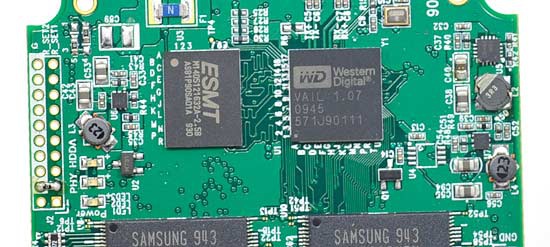When we read the specifications of a solid state storage unit, just as important as knowing the type of NAND memory that it uses inside to store our data, is to know what SSD controller the manufacturer has decided to install in it. But do we know what the controller is and how it is used in the function of the SSD?
Apart from the fact that the price of NAND memory is right now in the clouds, there is no doubt that solid state storage units are the greatest revolution that has been seen in decades within the area of consumer-market computer products and related to data storage on a personal level.
And we can affirm this in such a categorical manner not only because the latency in accessing the data that we store on these units is practically non-existent, but also because of the irrefutable improvements in speed that we have achieved because of them. This improvement in speed has allowed us to pass from the 100 or 200 MB/s that a mechanical hard drive could offer us (in the best of cases), to the 550 MB/s or 3 GB/s that SSD units are able to offer (depending on whether they use SATA or PCIe buses).
The SSD controller is in charge of organizing all of the data in the NAND memory cells
Given the high rate of transfer of files that a good SSD unit can reach, it’s important that its manufacturer incorporates a good SSD controller which takes charge of controlling where those files go and placing them in the memory directories that are free, carrying out an exhaustive control of the files. This function is basic in order to always know at every moment how much free space remains in our storage unit.
At the same time, a good SSD controller is able to process the information that it receives and distribute it in a more efficient manner than a lower-end controller or one without RAM which acts as a cache. The thing is, within the SSD, the memory controller tends to be the part of the device that heats up the most. This heat, if it is not controlled, can make the performance of the SSD drop off in a very notable way.
Another aspect that is a responsibility of the SSD controller is that of implementing the Wear Levelling manager. This technology takes charge of assuring that all of the NAND cells of the SSD are written on the same number of times, since this number is finite, as opposed to mechanical hard drives, on whose surface the number of times that information can be written is practically infinite.
